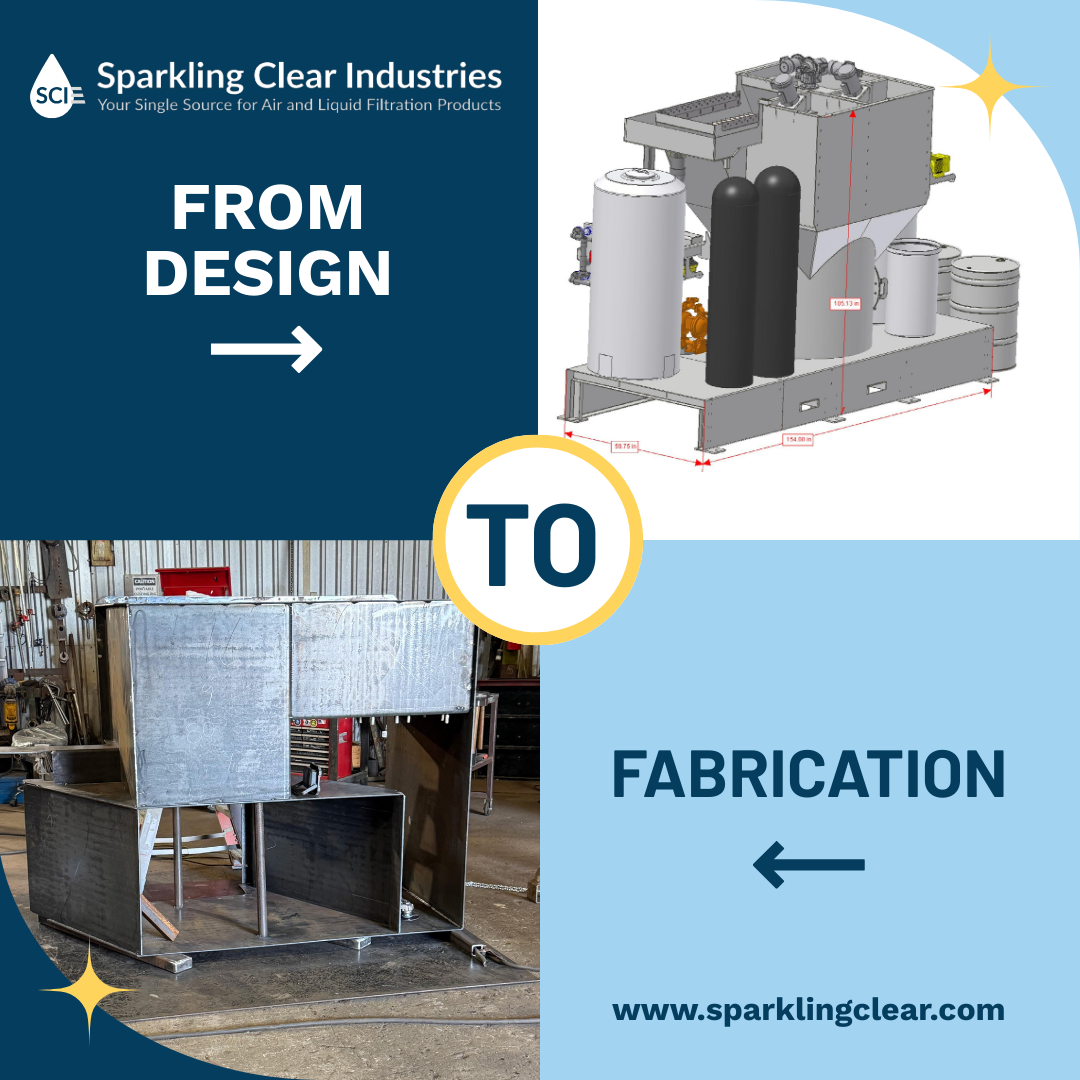Everything You Need To Know About Industrial Sand Filters
July 17, 2023
Industrial sand filters are essential to various industrial processes and wastewater treatment systems. They are designed to remove solid particles and impurities from liquids, making them suitable for further use or discharge. Here's everything you need to know about industrial sand filters.
What Is An Industrial Sand Filter?
An industrial sand filter is used in various industries to remove solid particles and impurities from liquids. It consists of a vessel or tank filled with a layer of specially graded sand or other granular media like activated carbon, diatomaceous earth, and gravel. They can come with one layer of media or multiple layers of mixed media.
Industrial sand filters improve the quality and clarity of the liquids that pass through them by trapping suspended solids, sediments, debris, and organic matter. After removing the contaminants, the fluid is transported to the next stage of its journey in a cleaner and more refined state.
Advantages of Industrial Sand Filters
Industrial sand filtration systems offer several advantages. Here are just a few:
Effective Particle Removal. The specially graded sand or other granular media in the filter bed effectively traps various impurities. The effectiveness it has against each type of impurity depends on the grade and type of sand used.
Versatility. Industrial sand filters can handle various liquid types and flow rates. This makes them adaptable to different industries and filtration requirements.
Cost-Effective. Industrial sand filters are often cost-effective compared to other filtration technologies. They also have low operational costs, requiring minimal energy consumption and maintenance.
Long Service Life. In most cases, sand can be cleaned and reused multiple times before replacement is required. The durable construction of the filter tank and components further contributes to the longevity of the system.
Regulatory Compliance. Sand filters help ensure compliance with environmental regulations by removing solid particles and impurities from liquid streams.
The advantages of industrial sand filtration may vary depending on the specific application, system design, and operational parameters. Consult with filtration experts and engineers to optimize the advantages of sand filtration for your particular industry or process.
Challenges and Maintainance Needs
While industrial sand filtration systems offer numerous advantages, they also present certain challenges and maintenance needs. Here are a few common ones to keep in mind:
Clogging and Pressure Drop. Over time, the filter bed can become clogged with accumulated solids, reducing the flow rate and fluid pressure in the process. You will need to perform backwashing as needed to remove trapped particles and restore optimal flow.
Backwashing. Backwashing involves reversing the water flow through the filter bed to dislodge and flush out trapped solids. Proper backwashing procedures, including flow rates and duration, must be followed to ensure effective cleaning without damaging the filter media. Your filtration experts can help you determine the right procedure for your system.
Media Replacement and Refilling. Over time, the filter media may require replacement due to degradation, loss of efficiency, or physical damage. The frequency of media replacement depends on factors such as the nature of the filtered liquid, filtration load, and operational conditions. Media replacement involves draining the filter, removing the old media, and refilling it with new, properly graded media.
Monitoring and Testing. Regular monitoring of key parameters like pressure, flow rates, and quality is crucial to ensure the effective operation of the filtration system. You will also need to periodically test the filtered liquid for quality and compliance with regulatory standards.
It is important to follow the specific manufacturer recommendations from your filtration experts for maintenance procedures and schedules. Regular and proactive maintenance helps optimize the filtration system's performance, extend its service life, and ensure the quality of the filtered liquid.
Sparkling Clear Industries Provides The Best in Industrial Sand Filtration Systems
Our sand filters are fully customizable to meet your specific filtration requirements. With our industrial-grade sand filters, you'll be able to meet your project deadlines faster and avoid costly delays. Contact us today for a consult.
Share this Post!

At Sparkling Clear Industries, we take pride in helping our customers solve real problems with practical, reliable solutions. One of our current projects is a great example of what that looks like in action. A local manufacturer came to us with a costly challenge: their wastewater stream contained enough oil and grease that it had to be hauled offsite for treatment. That process was costing them nearly $40,000 every month. Instead of continuing to pay for disposal, they wanted a long-term, on-site solution. Our team got to work.

As 2025 comes to a close, our industry has one more opportunity to come together—not just for networking, but to make a meaningful difference in the lives of children in our community. Sparkling Clear Industries is proud to join Brock Group and LEL Environmental as sponsors of the Holiday Toy Drive Industry Night at Schafer’s on Thursday, December 4th.

When: November 13, 2025 Where: Sylvan Beach Pavilion, 1 Sylvan Beach Dr., La Porte, TX 77571 Who: This event brings together leaders from the refining, petrochemical, manufacturing, and industrial services community for an evening of genuine conversations, good food, and industry connection. What to expect: Door prizes, good food and drink (with the added benefit of caring for community: you’re encouraged to bring a canned good for The Bridge Over Troubled Waters ). What to do next: Mark your calendar for November 13. Register for the event if you haven’t yet. (Here’s the registration link.) When you see us there, drop by and let us know what’s happening in your operation — downtime threats, upcoming shutdowns, filtration and vessel challenges — we want to talk solutions. Bring a canned good! It’s a small gesture that gives back to our community. We look forward to meeting new faces and reconnecting with familiar ones. If you’re planning to attend, reach out in advance and we can set a time to meet at the pavilion. See you at Sylvan Beach Pavilion!

